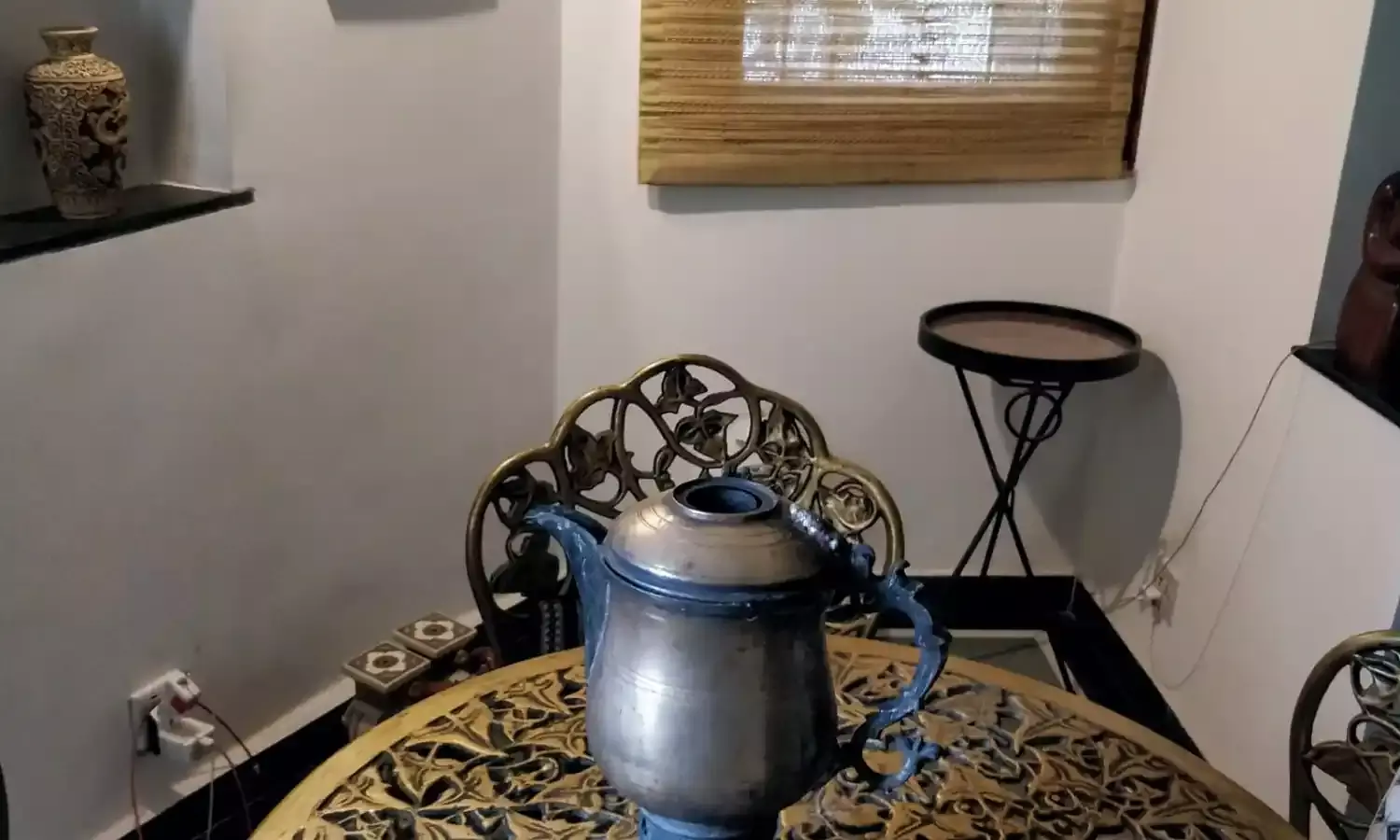The Self Brewer
A whiff of the past

This brass samavar belonged to my mother’s kitchen in Kashmir, as she bustled about making kehwa with its cardamom and cinnamonesque aroma wafting through the spout. Kehwa is related to the Turkish word for coffee kahveh which in turn might be derived from the Arabic word qahwa.
This memory is braided with a myriad vignettes of afternoon visits by aunts and cousins when kehwa was the chosen beverage. Conversations were light and colourful, like butterfly wings, between each sip of the sweet brew. Giggles and full throated laughter ricocheted from the walls. Very often Sitara apa was also included in the light gossip through an open window overlooking the neighbour’s wall. There were no walls or barriers to love’s free flow.
The old brass cups were ideal for keeping the green tea hot but one had to hold the cups with a small towel. And like chai-biskut one had kulcha, or another a bagel-like sesame round bread. With the storied breads of Kashmir we were spoilt for choice. The neighbourhood baker was always churning out mouth-watering breads one could send for in a jiffy. All this was in the informal family room, next to the kitchen. It was basically a ladies Kaffeeklatsch to shed the monotony of the daily grind.
In our itinerant Air Force moves from place to place, my samavar has been a treasured family heirloom. Around a century old by now, a little dented it still has a certain swag. The brass is a little tarnished with a patina on the lower fretted base. The lid of the charcoal funnel is missing yet it has a presence because of the memories associated with it.
Samavar has a certain uniqueness as well as a kinship with its kindred variations in various corners of the world. Samovar, a Russian word, it means a self brewer. It has found a niche in many parts of eastern Europe, Persia, Turkey, central and southern Asia. But the credit for manufacturing beautifully crafted samovars in mid-nineteenth century goes to two men known as the Lisitsyn brothers in the city of Tula in Russia, a city known for its metal workers and armaments. From ornate to simple workaday samovars used in palaces, homes and, of course, in taverns with huge samovars pouring out the tea with the hubbub of conversation around.
With the quickened pace of life, even the samavar makers have bowed to modernity and convenience and made some electric samovars like an electric kettle. Even in Kashmir it is the rural hinterland that sustains the old style samavars with live coal in the central cavity with space around for water. And with the selfie seduction most people pose with the samavar as a prop in Kashmir to flaunt the fact on social media that all boxes have been ticked. Mostly, it is bought as a souvenir to be displayed on a shelf.
But till my breath becomes air, this samovar of mine will whisper many stories in my ears. Most of all it’ll keep pouring memories of my mother and Kashmir into my mindscape—even though its days of making steaming kehwah are gone!



